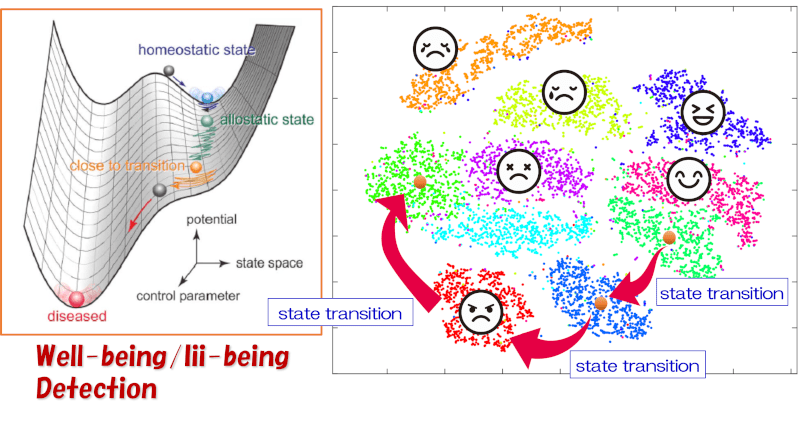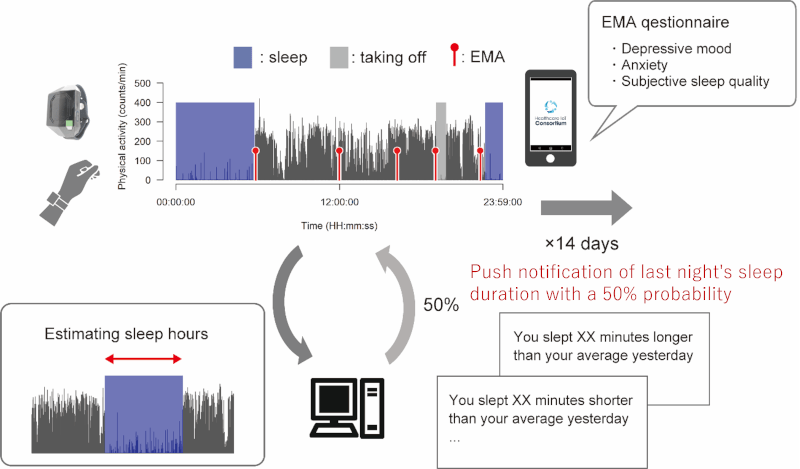Progress Report
Construction of an AIoT-based universal emotional state space and evaluation of well-/ill-being states[3] Establishment of Well-being/Iii-being Detection Technology
Progress until FY2023
1. Outline of the project
Based on the outcomes of the research and development themes "Constructing a Human Emotional State Space by AIoT" and "Constructing a Universal Emotional State Space," we will develop technology to detect and evaluate mental well-being by characterizing the dynamical properties of emotional state transitions, such as transition matrices, transition frequencies, residence times, or first passage times) (Figure 1).

2. Outcome so far
In this year, we conducted preliminary analyses using several samples of physiological data measured from the Social Defeat Stress (SDS) mouse model, which are being acquired under the research and development theme "Constructing a Universal Emotional State Space." We examined the alterations in the dynamical properties of physiological signal fluctuations before and after onset and during transition states. The identified properties will be further investigated as indicators for detecting mental well-being and ill-being.
On the other hand, as a support technology for mental well-being, we analyzed research data obtained from an intervention study that monitored and evaluated daily sleep using the sleep tracker-linked cloud system developed under the research and development theme "Constructing a Human Emotional State Space by AIoT." Random push notifications aimed at improving sleep were sent to groups with unstable and stable sleep patterns (Figure 2). This intervention study is positioned as a Just-In-Time Adaptive Intervention using micro-randomization. As a result, feedback on the previous night's sleep duration led to a significant extension of sleep duration and improvements in mood and sleepiness upon waking. Furthermore, these effects were observed only in the unstable group.

3. Future plans
We will develop technologies to detect and understand mental well-being by analyzing the transition characteristics of emotional states in healthy individuals, patients with diseases, and disease model mice.
(NAKAMURA Toru: Osaka University
YAMAMOTO Yoshiharu: The University of Tokyo)